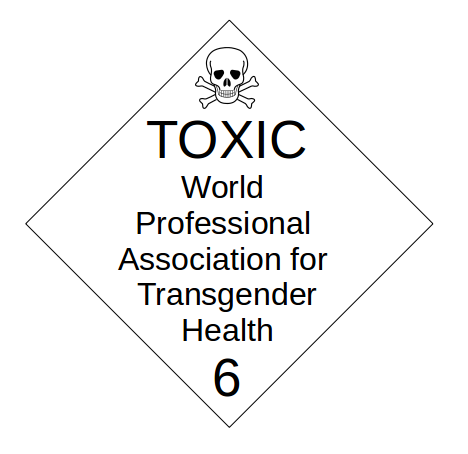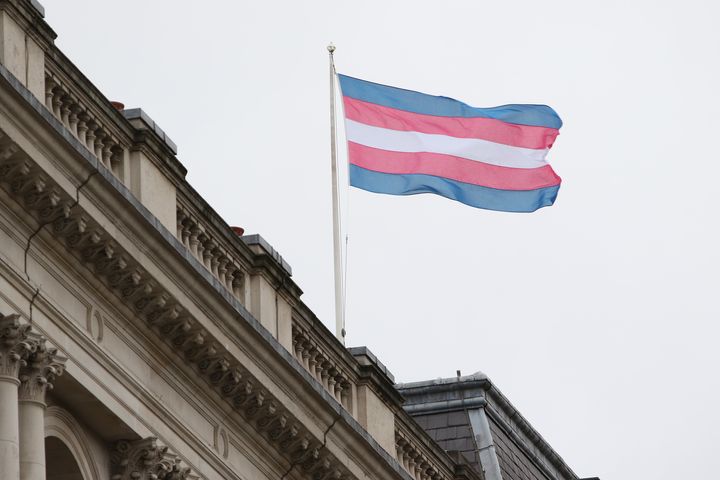Yes, Women Have Vaginas
But that’s not the sum-total of what we are

This article is a reprint of a pamphlet created by the Chicago Feminist Salon.
If you are a radical feminist woman and would like to join them, send an email to: [email protected]
Women are not women because we choose to be women. Women are not women because we identify as women. Women are women due to the reality of our material bodies, as easily observed by other people. We are a class. We are female human beings, just as ewes are female sheep and does are female deer. There is nothing mysterious about this.
Bodies have social meaning. The collection of assumptions made about our personalities, our inclinations ― our “brains” ― as a judgement on the material reality of our female bodies, along with the rules and restrictions that are then imposed on us as a result of those assumptions, are what is known as “gender.”
Female people, as a sex class, have the ability to produce the next generation of human beings, and to provide heirs. Male people desire to control this ability, and impose various rules on women to achieve that control. This is patriarchy. The specific form it takes, the specific rules imposed, vary across the world in different cultures, but the root, and the aims, are the same ― male control of female reproductive power. Gender is the tool which upholds the patriarchy.
Female people, as a sex class, share the experience of being forced into the gender imposed on us as observed female people. We share the formative experience of being raised as girls, and then maturing into women.
This is true regardless of our own personal relationship with gender, whether we find strategies to accommodate it and “conform,” or whether we struggle against it and suffer for not conforming. This is true across the world regardless of how the specific rules differ in specific cultures.
We are united as a class in our experience of having to deal with the externally imposed gender of “woman.”
Belief In The Doctrine Of Innate Gender Is Incompatible With Feminism
Gender is not innate. There is no “woman’s brain,” no “woman’s personality.” Indeed there is no normative relationship of personality or thought processes to sex/genitalia/reproductive system. There are only assumptions and rules, forced upon us due to our observed sexed bodies. Belief in innate gender is profoundly sexist, full stop.
We cannot identify out of having these assumptions and rules placed upon us. We need to fight the system itself, fight the rules.
We Need Feminism, Not Identity
Feminism is rooted in class consciousness. Feminism is rooted in shared experience, not only of our shared physical features but also of growing up with the social meaning of those features. Feminism is about fighting for the liberation of female people with concrete action.
Identity, meanwhile, is individualist, a product of post-modernity which enforces and encourages extreme individualism, and boils down to a series of language games. It’s a false trap to imagine that we can change the power dynamics in the world merely by conceiving of ourselves differently or changing the labels for the boxes we’re forced into.
Everyone Knows What “Woman” Really Means
Lately it’s fashionable in certain postmodern queer-theoretical circles to play coy, to deny the reality that humans (like cats and dogs and marmots) are a sexually dimorphic species, to waffle and quibble and pretend that it’s impossible to define just what “woman” really means. “If your mother has a hysterectomy, is she still a woman? What about infertile women?”
But the truth is that everyone on all sides of the “gender debate” knows what a “woman” really is.
The proof is in the fact that when those communities appropriated the term “woman” for their own ends, to include “males who identify as women” in it, they had to come up with their own new term to refer to what we all know as “women” ― because even they have a need to talk about us as a unified class. That’s how obvious and united a group we are.
The term they chose to use? “AFAB” for “Assigned Female at Birth.”
Next time someone from those circles asks you the gotchas, is so and so a woman, is your mother with a hysterectomy still a woman, all you have to do is answer back in their own language: “Well, was she AFAB? Because that’s your answer.”
The magic is that the word has been adopted for this use by the postmodern queer theory community itself. Males who “identify as women” won’t use this term for themselves, because the fact of not being AFAB is indeed what makes them trans.
Meanwhile, of course, we all know that it is not at all random which children are “assigned female at birth.” It’s the children who sport a vulva rather than a penis. No expert is needed to decide which kids get slotted into “girl” and have “girl” gender with all its restrictive rules applied to them.
Born with a penis? Not AFAB, hence, not a girl, and not a woman. End of story. Males calling themselves “woman” are appropriating an experience which they do not, and cannot, understand.
Don’t let anyone tell you they don’t know what a “woman” is. We must stand up for the original use of “woman.”
Your Body And Mind Are Fine As They Are
Gender is oppressive. It is not surprising that girls in particular struggle with the rules applied to them due to their observed female sex.
It is not uncommon for this struggle to ramp up with puberty, as girls confront the horror that is being sexually objectified, and meet the restrictions and limitations that come with being an adult woman, meet the reality that still in many ways they are not regarded as full human beings in their own right, but rather accessories to men.
Girls and women are told in many ways that their bodies are wrong ― the wrong height, the wrong weight, the wrong shape. Gender demands that the female body is to be shaped and restricted to fulfill the purpose of sexual objectification, while at the same time the sexed features of the female body are derided and mocked, portrayed as inadequate, weak, fleshy excess, vulgar in comparison to the male standard. The same breasts and curves that are demanded become “evidence” that women are sex-obsessed mindless creatures who have no higher ambition, no inner strength. Our monthly bleeding, the evidence of our unique power to create life, is twisted into an ugly taboo.
Women must at the same time be voluptuous, and yet take up no space.
Many a girl will internalize these messages and come to feel that the fault is in the body ― if only she were not a girl at all, all would be right. Surely the body is wrong. She has a full personality, after all, but in this “wrong” body that isn’t permitted to have one. She chafes at the rules that come with this body, they don’t fit, surely the body is wrong, a massive birth defect. She has dysphoria.
The new false promise of postmodern queer-theoretical circles is to say that those who do not wish to conform to these demands of gender may escape it, but indeed only by “no longer being women.” Crucially however this process of becoming “not-women” is generally taken to involve artificially modifying the body to remove and blunt the sexually dimorphic features that mark it as female, in favor of attempting to mimic a crude facsimile of the male form. Girls who have come to hate their bodies, to resent their breasts for the gendered social meaning that they hold, are told that this revulsion is a “natural” outcome of “not being women,” rather than the internalized misogyny which it actually is. It is presented as impossible for a woman to be both observably female and free of the rules and stereotypes forced upon female people under the patriarchal gender system. Far from challenging gender, this is the ultimate capitulation to the system. To be happy, she must either not be “woman” ― meaning not observably female ― or else acquiesce to the gender rules and sexual objectification.
We are our brains, so the saying goes, we can’t (and shouldn’t have to) change who we are, inside. It’s far easier to change the body.
But the truth is, there is no normative relationship of personalities, of inclinations, of SELF, to genitalia and reproductive systems and sexed bodies. The postmodern and post-humanist mantra “Change the body or change the mind, we can’t change the mind so we change the body” is a false dichotomy. Our bodies and minds are a valid combination just as they are. We need to come to a radical acceptance of ourselves. We are valid. Whatever, however, we are, we define what “woman” is and can be.
The true answer lies in changing the meaning that society assigns to the sexed features of our bodies. We don’t need a bigger variety of boxes, of labels, of chains. We need to smash the boxes, break the chains, and be free. Indeed we must abolish gender and fight for true women’s liberation.
Licensed under CC BY-SA 4.0, Chicago Feminist Salon
Cover photo by Retha Ferguson from Pexels
Enter your email below to sign in or become a 4W member and join the conversation.
(Already did this? Try refreshing the page!)




Comments